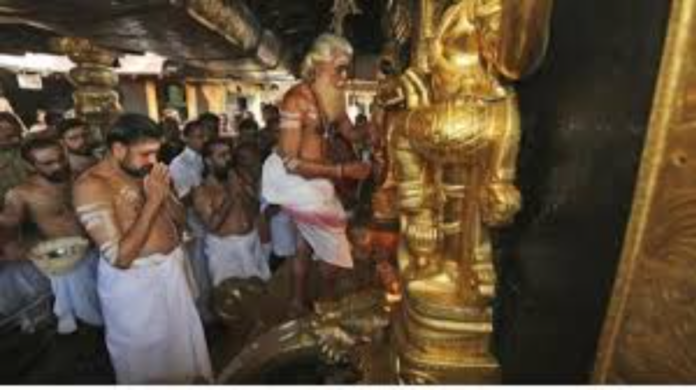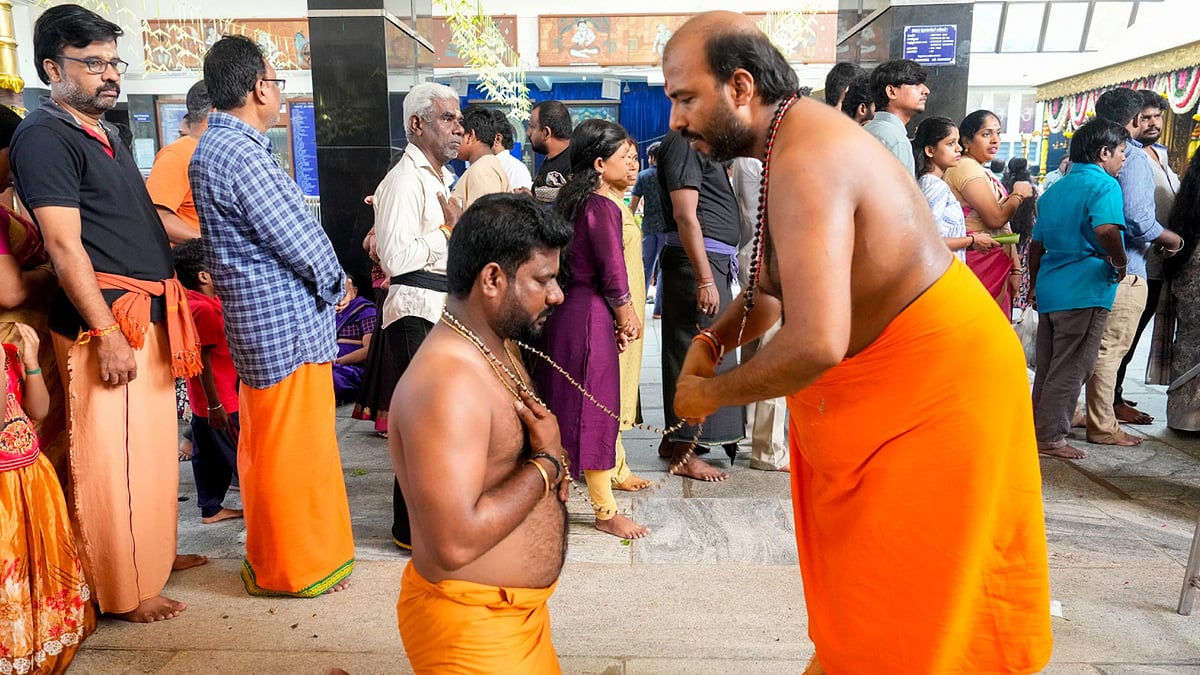Kerala temple shirt removal is a long-standing tradition that has recently sparked a debate over its relevance in modern times. The custom requires men to remove their upper garments before entering temple premises, a practice rooted in caste-based traditions. This tradition, enforced in several major temples across Kerala, is now facing challenges as social reformers and leaders call for change.
The Historical Roots Of Shirt Removal In Temples
The practice of removing shirts in Kerala temples has its origins in the caste dynamics of traditional Hindu society. Historically, the punool (sacred thread worn by Brahmins) symbolized upper-caste privilege. Mandating shirt removal ensured visibility of this thread, reinforcing caste hierarchies.
Kerala’s temple customs are deeply intertwined with the Agamas, ancient texts that dictate temple rituals, construction, and worship practices. The Agamas emphasize purity and discipline, which led to strict rules on attire. Over time, these rules became ingrained in temple traditions, often excluding those who did not conform to the caste system.
Calls For Reform And The Role Of Social Leaders
The call to abolish the shirt removal custom has been spearheaded by Swami Satchidananda of the Sivagiri Mutt, a spiritual center established by social reformer Sree Narayana Guru. At the Sivagiri pilgrimage in December 2023, the Swami referred to the practice as “abhorrent” and “evil.” He highlighted that temples associated with the Sree Narayana movement do not enforce such customs, showcasing an alternative approach to inclusivity.
Kerala Chief Minister Pinarayi Vijayan supported the demand, calling it a “major social intervention.” He expressed hope that more temples would follow the progressive example set by Sree Narayana temples. “Many practices have changed in tune with the times,” he said, emphasizing the need for modernity in religious spaces.
The Debate Over Tradition And Modernity
While reformist voices grow louder, the debate has polarized opinions. Organizations like the Nair Service Society (NSS) have criticized the push for change, arguing that it undermines traditional practices. On the other hand, the Sree Narayana Dharma Paripalana (SNDP) Yogam has urged Hindus to unite and consider reforms that align with contemporary values.
The Travancore Devaswom Board and Guruvayur Devaswom Board, which oversee many temples in Kerala, are deliberating on the issue. These bodies hold the power to implement changes but face resistance from those who view the practice as integral to temple customs.
Dress Codes Across Kerala Temples
The rules for attire in Kerala temples vary widely:
- Sree Padmanabhaswamy Temple: Men must remove their shirts, while women are required to wear saris or wrap a dhoti over their lower garments.
- Guruvayur Sri Krishna Temple: Similar dress codes apply, though the requirement for women to wear saris was relaxed in 2013.
- Sabarimala Temple: Male devotees adhere to a strict dress code of black shirts and mundu (dhoti) during a 41-day ritual of austerity and abstinence.
While some temples maintain strict adherence to traditional attire, others have adopted more inclusive policies, reflecting a shift towards modernization.
Legal Challenges And Historical Attempts At Reform
The controversy over temple dress codes is not new. In the 1970s, the Kerala government attempted to abolish restrictive temple attire requirements, but the initiative had limited success.
In 2014, the Kerala High Court dismissed a petition challenging the shirt removal practice, citing the principles of the Agamas. The court ruled that temple customs, rooted in religious texts, did not violate the fundamental rights of devotees. It emphasized that worshippers must adhere to temple-specific rules, even if they appear restrictive.
The Larger Context Of Social Reforms In Kerala
Kerala has a rich history of social reform, with leaders like Sree Narayana Guru championing equality and inclusivity. The current debate over shirt removal is part of a broader push to modernize religious practices and dismantle remnants of caste-based discrimination.
Vellapally Natesan, leader of the SNDP Yogam, stressed the importance of unity among Hindus in navigating this sensitive issue. “We must ensure our practices reflect the values of our society while preserving the dignity of our traditions,” he said.
Potential For Change And Future Implications
As discussions continue, the future of the shirt removal custom remains uncertain. The practice highlights the tension between preserving tradition and embracing progress. For reformists, abolishing the practice would symbolize a step towards inclusivity and equality in religious spaces.
For others, however, it represents an erosion of cultural heritage. The challenge lies in finding a balance that respects tradition while addressing the evolving values of a dynamic society.
The growing support for reform suggests a shift in public sentiment, with influential leaders and organizations advocating for change. Whether Kerala’s temples choose to retain or abolish the practice, the debate underscores the importance of adapting religious customs to contemporary social realities.



